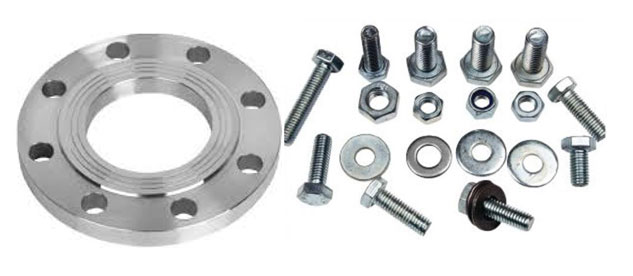One of the systems that has an important place in providing suitable conditions for plant growth in greenhouse construction is the heating system. While the heating system is made with natural gas and solid fuel boilers, geothermal resources are tested by our company's experienced teams, such as well tests and well characteristic features, and the investor is provided with the most appropriate service. After studies such as flow rate, temperature and well depth of the water coming out, the heating system is implemented based on the maximum lowest temperature in the region where the greenhouse will be built. In the same conditions, in regions where there is no geothermal resource, solid fuel or natural gas fueled boilers are selected according to the values of the area where the greenhouse will be established. The heating system is divided into sectors in equal measure by our project department in order to heat the greenhouse in the best way possible. For these sectors, base rail heating, under-chute heating, product heating systems are designed and circulation pump and 3-way valve groups are created.
According to the climatic conditions of the region where the project will be carried out and the type of product to be grown, expert teams
We determine and implement the systems that you may need in the system.
Today, heating systems remain a crucial element in commercial greenhouses around the world. The first things to consider when looking at climate are the temperature during the day, the temperature at night, and the relative and absolute humidity levels. Many greenhouse crops require a day and night temperature difference for proper fruit set. To achieve these conditions, a greenhouse heating system is in most cases the first technical setup to consider.
Rail Greenhouse Heating System
Greenhouse Snow Melting System
Under Gutter Greenhouse Heating System
Greenhouse Plant Heating System
Greenhouse Side Heating System
Greenhouse Ceiling Heating System
Seedling Bench Heating System
Automatic Greenhouse Heating Methods
GREENHOUSE HEATING SYSTEMS
The indoor environment conditions for most of the plants in general or for most of the vegetables, etc. grown in greenhouses in particular are as follows.
Dry bulb temperature inside the greenhouse: It is between 10 °C and 30 °C. The most ideal temperatures are 15-26 °C.
Relative humidity value inside the greenhouse: It is between 60%-80%.
The CO2 rate inside the greenhouse is between 300 ppm and 1200 ppm.
Because low temperatures and high temperatures prevent the development of plants and giving healthy products. At the same time, it has a reducing effect on the annual total productivity of greenhouses. Therefore, the most suitable temperatures are 15-26 °C.
The plant grown under these conditions both grows healthy and gives more and better quality products in a unit of time. For this reason, in modern technological greenhouse structures, it is imperative to keep the indoor conditions at the required temperature and humidity values in all months of the year for the plants to grow and produce quality products.
Winter Period In very cold regions, especially at night, the temperature is kept between 13 °C and 16 °C.
GEOTHERMAL HEATING SYSTEMS.
It is a very common form of heating in our country. If there is a thermal water source with sufficient temperature and flow in the region where modern technological greenhouses are located, this system provides a very economical result in terms of operation. However, the only problem here is to evaluate the thermal source as an endless source and to spend it roughly, causing the source to decrease over time and at the same time causing the thermal water to pollute the region. Therefore, it is necessary to carefully plan the thermal heating system. Another problem is that if the temperature of the thermal source is below 50 °C, since more static heating is used in the greenhouses, it causes the heating pipes inside the greenhouse to stretch too much. This increases the initial installation cost of the heating system.
As a result, a thermal source temperature of 60-70 °C will provide appropriate initial investment and operating cost for the heating system to be installed.
The chemical structure of the thermal source is as important as its temperature.
The unit m3 price of the thermal source also constitutes an important data in terms of operating costs.
The flow rate, temperature and location of the thermal water to be sent back underground are the factors that affect the initial installation cost and operating cost of greenhouses as important data.
Heating is a system with very low operating costs.
Geothermal Heating system is also an environmentally friendly ecological Heating system.
The heating devices used in geothermal heating systems are Plate Heat Exchangers.
Heat Exchanger Made Of Plates Titanium Alloy
Plates can be manufactured as a Stainless Steel Heat Exchanger.
Average Used Capacity ranges: It varies between 500 kW and 10,000 kW.
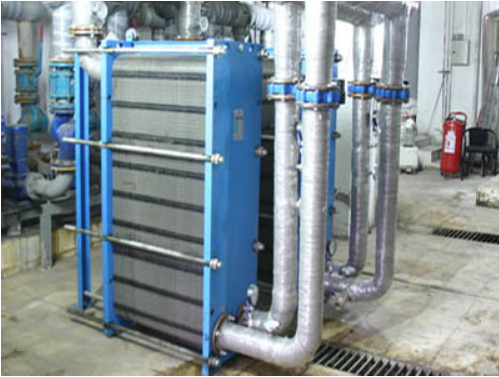
HEATING SYSTEM USING COAL BOILER:
It is the most easily available type of fuel in our country. Siberian coal is also used in some projects. However, the price of Siberian coal is 82% more expensive than domestic soma lignite.
The energy value of domestic coal is in the range of 4500-5000 kcal/kg.
Combustion efficiency is around 60-65%.
Coal boiler heating systems are systems with high operating and maintenance costs, although the initial installation cost is low. At the same time, it is a system with a higher rate of polluting nature. The storage of coal is a separate problem. Because if the coal is not stored at the appropriate temperature and humidity, the quality of the coal deteriorates and the combustion efficiency is greatly reduced. This increases the operating cost in greenhouses and reduces the productivity value.
There are coal boilers produced by many different companies in our country. At the same time, automation is more difficult in coal-fired boilers. For this reason, if there is natural gas, thermal energy, etc. in the area where the greenhouse will be built, coal-heated system should not be preferred.
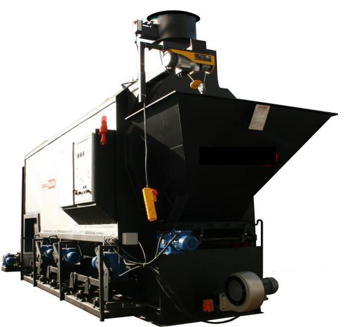
NATURAL GAS HEATING SYSTEM
Natural gas; It is a colorless, odorless and lighter-than-air gas consisting of 95% methane, a small amount of ethane, propane atoms, butane and carbon dioxide. Since natural gas is odorless, it is specially scented so that leaks can be noticed.
Natural gas heating systems are widely used in our country and abroad. Natural gas systems are easy to install. The initial investment and operating costs are low. It is possible to control with any kind of automatic control system.
The combustion efficiency of natural gas is in the range of 85%-90%.
Their economic useful life is 15 years - 20 years.
Maintenance costs are low.
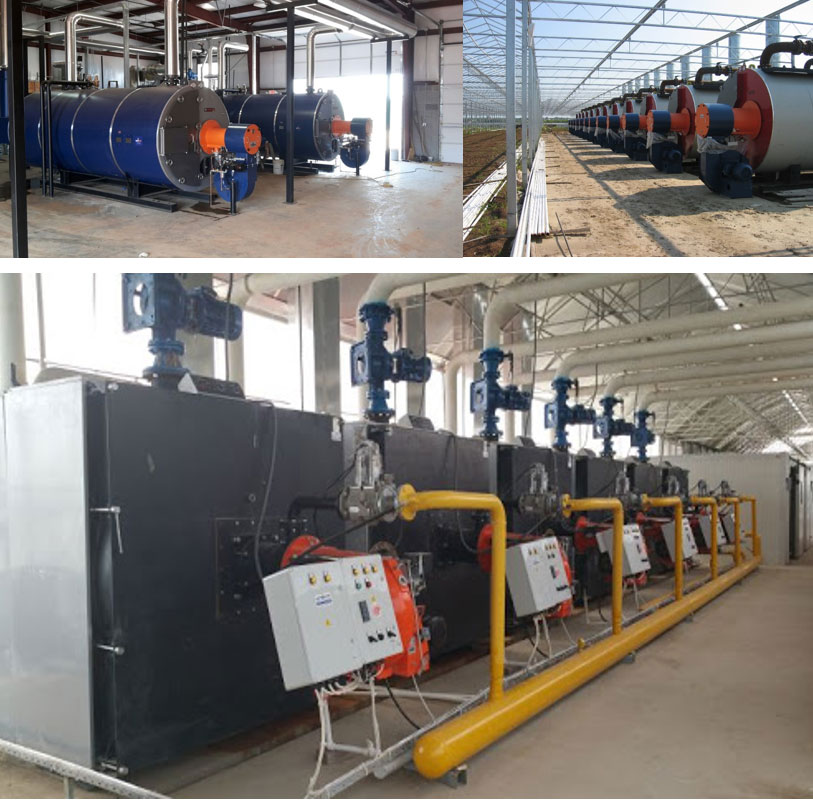
GREENHOUSE COGENERATION SYSTEM: ( HEAT + ELECTRICITY POWER GENERATION SYSTEM)
Cogeneration (English: Cogeneration or combined heat and power (CHP for short)) is a modular system that is preferably used in places with heat consumption and can also produce electrical energy and heat, which can feed the district heating network with useful heat. This system is based on the principle of combined heat and power system.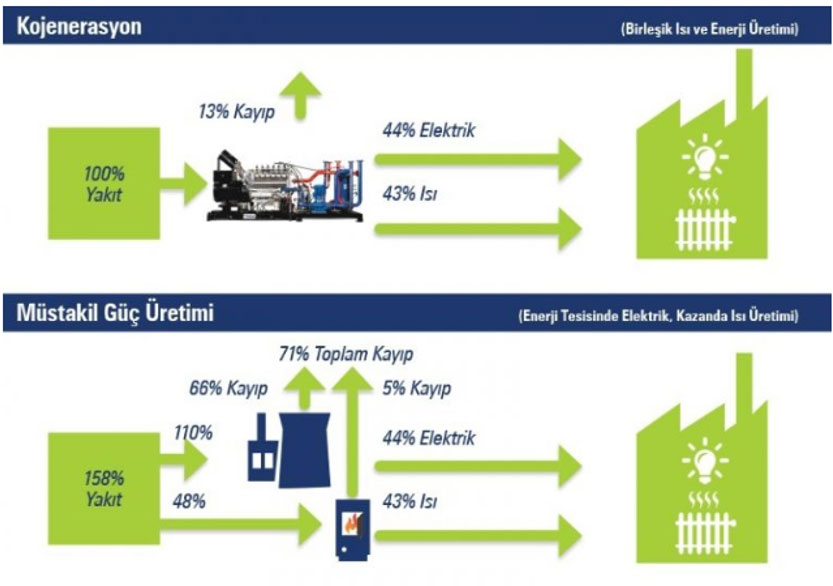
What are the Advantages of the Cogeneration System?
- While generating electricity, it also provides the opportunity to produce hot water, steam, hot gas, hot oil or cold water depending on the need, and it can respond to energy consumers in the residential, commercial and industrial areas with its wide product range.
-Natural gas, propane, diesel, landfill gas, biogas etc. By working with fuels, uninterrupted, high quality and high efficiency energy is produced.
-It can work with low pressure gas fuels without investing in a compressor.
These enterprises, which consume electricity where they are produced, are not exposed to transmission loss and unit energy costs are very low since they also gain waste heat.
They get rid of the damage caused by voltage and frequency fluctuations (network pollution) in the network. Expenses such as the burning of electronic cards and transmission losses are reset.
-From a single facility; It enables industrial steam, electricity and central heating/cooling services to nearby settlements.
-Limited resources are used effectively and emission losses are minimized, both because high-tech turbines and engines are used, and because the total cycle efficiency is increased by cogeneration, in other words, primary fuel is saved at the rate to obtain the amount of waste heat. In particular, a significant reduction in CO2, that is, greenhouse gas emissions, is ensured.
- It is not affected by power cuts and electricity can be taken from the network in times of maintenance or breakdown.
-Increasing the safety and reliability of local and general power plants, and being without electricity and heat energy for local consumers can be prevented by cogeneration. It is a more reliable energy generation system since the problems in transmission lines or distribution will be less due to the locality of the system.
-The use of biological wastes in this system contributes to the increase of price efficiency and the evaluation of wastes.
– The efficiency of the cogeneration plant is always higher than a traditional power generation plant. In this way, energy and cost savings increase.
As a result, Combined heat and power generation (CHP), or cogeneration, as it is best known, is a method that has positive effects such as spending less global resources and causing less damage to the environment while providing profit to businesses. It is also known worldwide as an attractive alternative to replace typical power and heat generation options due to its low cost investment, shorter start-up time, low fuel consumption as well as environmental pollution and increasing fuel diversity.
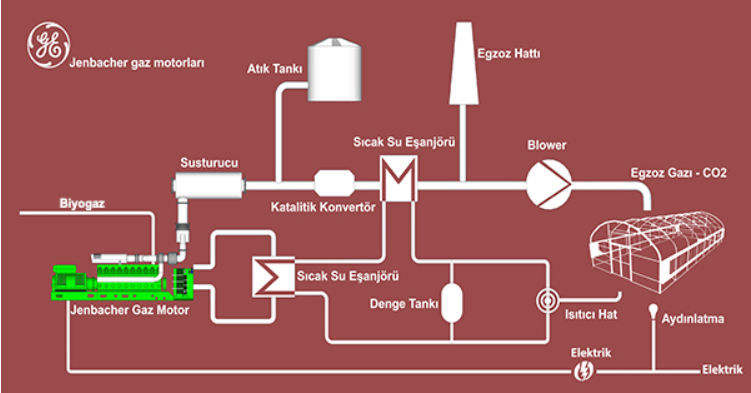
Benefits of Cogeneration in Greenhouses
The efficiency level is up to 95% and therefore makes a great contribution to conserving resources and maximizing profits.
The electricity produced during peak demand times of the national grid is sold to the grid.
CO2 and waste heat are stored regardless of time
High quality CO2 is produced
Carbon Dioxide and the Growth of Plants
Plants grow by converting CO2 to carbon by photosynthesis. There is approximately 350 ppm (one millionth) of CO2 in the atmosphere. Optimal CO2 values vary according to the plant and are usually below 700 ppm. Plants absorb even more CO2 through artificial lighting used in greenhouses. If the greenhouse environment can be enriched with CO2 and the temperature can be kept at a certain level with sufficient lighting, the growth rate of the plants and thus the number of harvests and yields will increase significantly. When burning natural gas in gas engines, approximately 0.2kg of CO2 is produced per kilowatt of electricity produced. This value corresponds to 5-6% of the exhaust gas by volume.
Energy Use
The energy produced by gas engine cogeneration / combined heat-power generation systems can be used in greenhouses in a wide variety of ways. It can provide electrical power for artificial lighting and/or the electricity produced can be sold to the national grid. Heat can be used effectively in line with greenhouse needs. In addition, the CO2 in the engine's exhaust gas acts as a fertilizer for plants.
Conditioning Exhaust Gas
After the exhaust gas is separated by special catalytic converters (SCR and combustion catalytic converter), it is cooled by a heat exchanger to approximately 55°C and sent to the greenhouse for CO2 enrichment. In order to keep the growth and development of plants at the optimum level, the exhaust gas composition is constantly monitored with a measuring device.

TRIGENERATION SYSTEM:
The difference from cogeneration is that when the cooling system is added to the system, it is a system that can perform 3 functions at the same time.
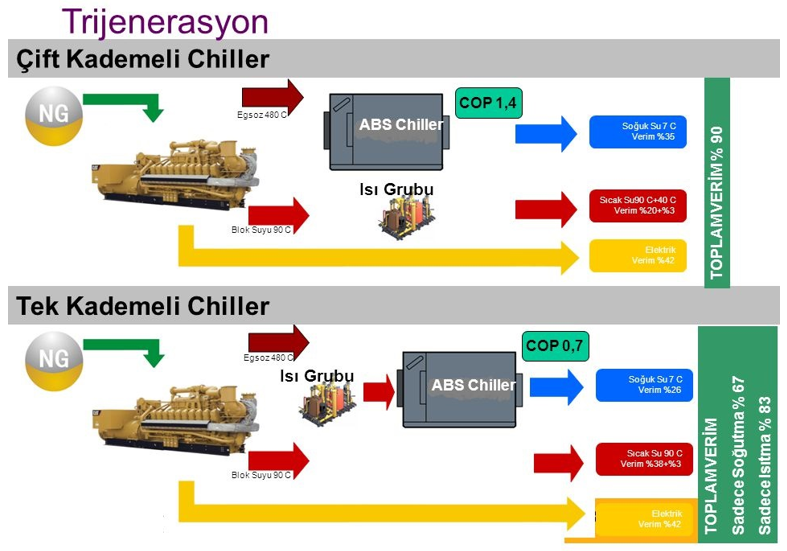
GREENHOUSE HEATING SYSTEMS.
Main Pipe Distribution System in Greenhouse-Tichelmann Method
The Tichelmann Method is based on the principle of isothermal pressure drop in the pipe circuit. Accordingly, the same flow rate circulates in all secondary circuits. Therefore, there is no need for materials that provide additional flow and pressure control in the greenhouse heating circuit. It is a natural flow adjustment and control system.
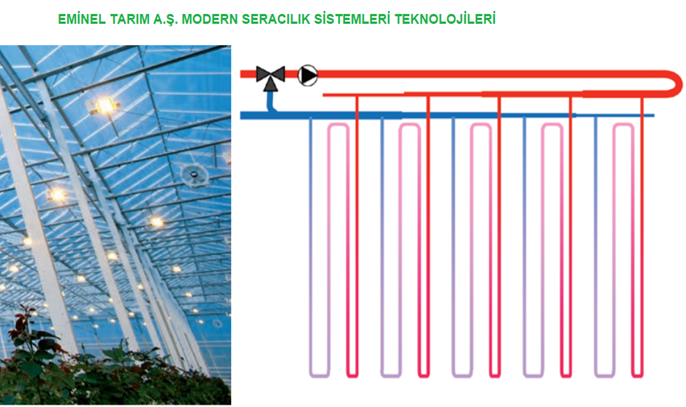
Rail Heating System
It is the practice of laying the Heating Pipes in the greenhouse horizontally in 12 rows in each tunnel.
The heating pipes used are Q51-2.5 mm black pipes.
Pipes are placed on spot feet.
It is a widely used method in greenhouse heating application.
Under Gutter Heating System
In cases where the climate conditions in which the greenhouse is installed are cold, if the rail heating system is insufficient, a Gutter heating system is made.
It is the application of laying the Heating Pipes in the greenhouse horizontally under the plant transport beds, in 12 rows in each tunnel.
The heating pipes used are Q51-2.0 mm black pipes.
Pipes are placed on spot feet.
It is another method widely used in greenhouse heating application.
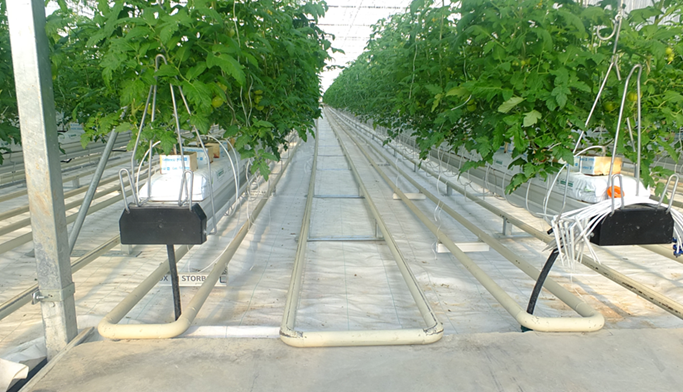
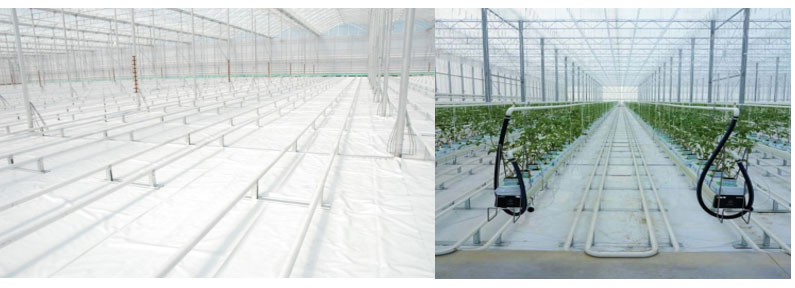
Plant Heating System.
It is the practice of laying the Heating Pipes in the greenhouse in 12 rows or sometimes 6 rows in each tunnel.
The heating pipes used are Q38-2.0 mm black pipes.
Pipes are hung with a special hanging system.
It is another method widely used in greenhouse heating application.

Snow Melting System.
If the external climatic data in the region where the greenhouse is installed is both very cold and the snowfall rate is high, the snow melting heating system is used.
This system is also known as under-groove heating system.
Heating pipe diameter used: Q51-2.0 mm
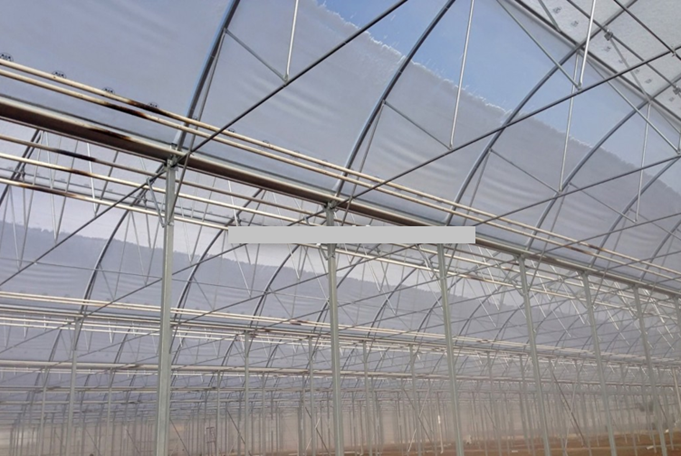
Environmental Heating System.
Depending on whether the heating needs of the greenhouse are met, the environment or side heating system is also used.
Pipes used: Q51-2.0 mm
Usage: 4 rows, 6 rows or 8 rows of lateral heating pipes can be used.
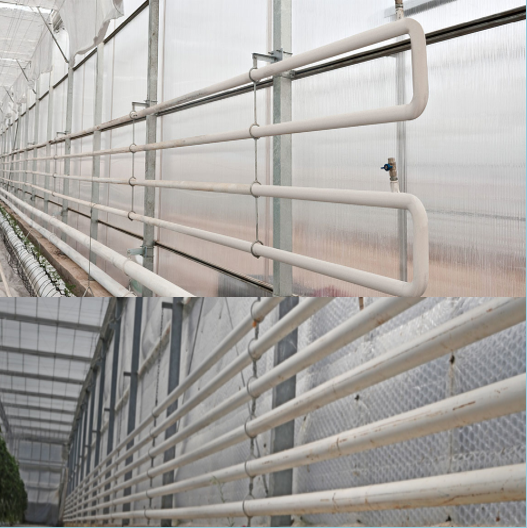
COMPLEMENTARY PRODUCTS USED IN GREENHOUSE HEATING SYSTEMS:
Rubber Hose.
From Tichelmann Ring – Hoses used to make heating connections from the Main Heating Pipeline to the lateral lines.
Hose Diameter Used: Q27
Generally, the length used for each row is approximately 3 meters.
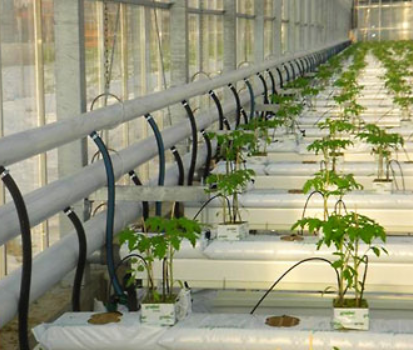
Console and Suspension Systems.
They are the materials used for hanging the main heating pipes inside the greenhouse and for hanging the lateral heating pipes.
They are defined as T suspension system, U suspension system and suspension rings.
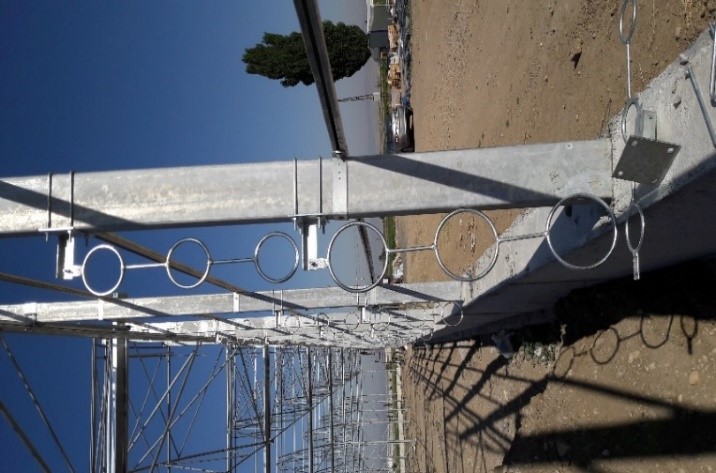
Tülü-Lingers and Handcuffs.
They are the connection elements used to connect the secondary lines by taking a line from the main heating pipe. Curve Tulle is mostly used in plant heating systems.
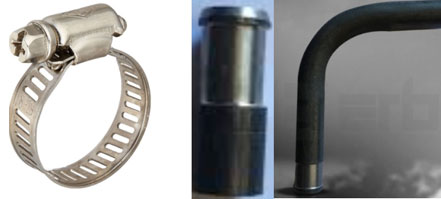
Spot Foot.
They are Pipe transport elements that perform the function of carrying rail heating and Under Gutter heating pipes.
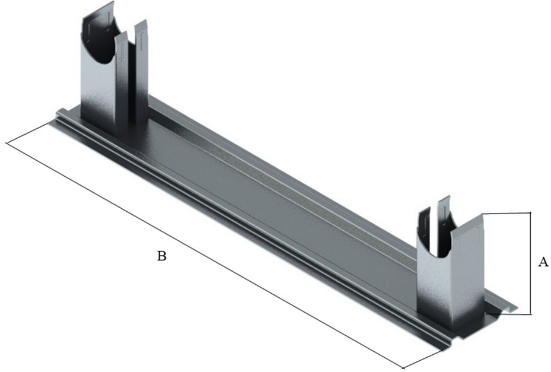
Greenhouse Heating Pipes – Geothermal Infrastructure Pipes
They are the elements that perform the function of transporting energy in the heating or cooling system.
Black welded type heating pipes and industrial pipes are more widely used in greenhouse heating system. Infrastructure pipes are geothermal pipes in which the energy produced in the Main Heat production center is distributed from the Underground to the greenhouse. Geothermal pipes are pipes that are insulated and specially produced.
The diameters used are between Q38 and Q350 diameters.
Pipe wall thickness: It varies between 2.0 mm and 5 mm.

Greenhouse Heating Pumps.
They are the elements that fulfill the function of circulating the hot water produced in the Heater Boiler in the greenhouse heating system through the pipes.
The more commonly used heating pumps in greenhouses are the so-called inline type pumps.
Flow ranges are between 0-500 m3/h.
Heads: Between 0-100 ms.
Operating efficiency: It varies between 50% and 80%.
Mode of operation: It is both fixed speed and proportional (inverter) controlled.
Economic lifetime: 15-18 years.
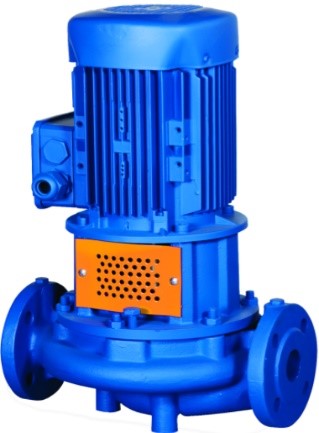
Greenhouse Heating System Automatic Control Valves.
They provide the following functions in the Greenhouse Heating system.
To provide energy control in the greenhouse
Keeping greenhouse temperatures at a constant value.
To provide operating cost savings in the Heating System.
They are the elements that provide a balanced, economical and sensitive operation control in all heating and cooling systems.
Control Type: Open-Close Control and Proportional Control.
Valve Diameters Commonly Used in Greenhouse Heating Systems: Between DN32 and DN250.
Economical Usage Life: 15 Years.
2 Way Motorized Valve
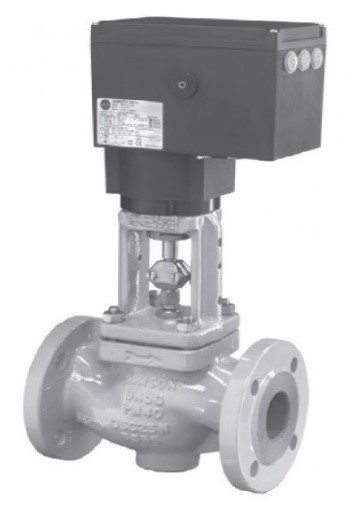
3 Way Motorized Valve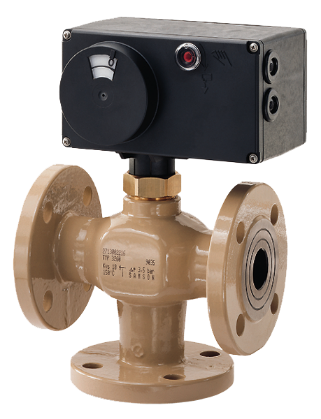
Greenhouse Heating System Shutdown and Control Elements.
They provide the following functions in the Greenhouse Heating system.
These elements are Ball Valves, Butterfly Valves, Strainer, Check Valve, Air Separator, Sediment Separator, Air Purge, Manometer, Thermometer, Flow Meter etc.
They provide the following functions.
To prevent or partially close the movement of the heating fluid in the greenhouse heating system
To ensure a controlled and trouble-free service and maintenance process by isolating the main devices from the heating system during service and maintenance.
To direct the heating fluid in the heating system
To ensure that foreign materials, residues and small particles in the heating system are retained and discharged.
By evacuating the air in the heating fluid in the heating system, to ensure a more stable and trouble-free operation of the system.
To ensure that the Temperature and Pressure values in the heating system are measured.
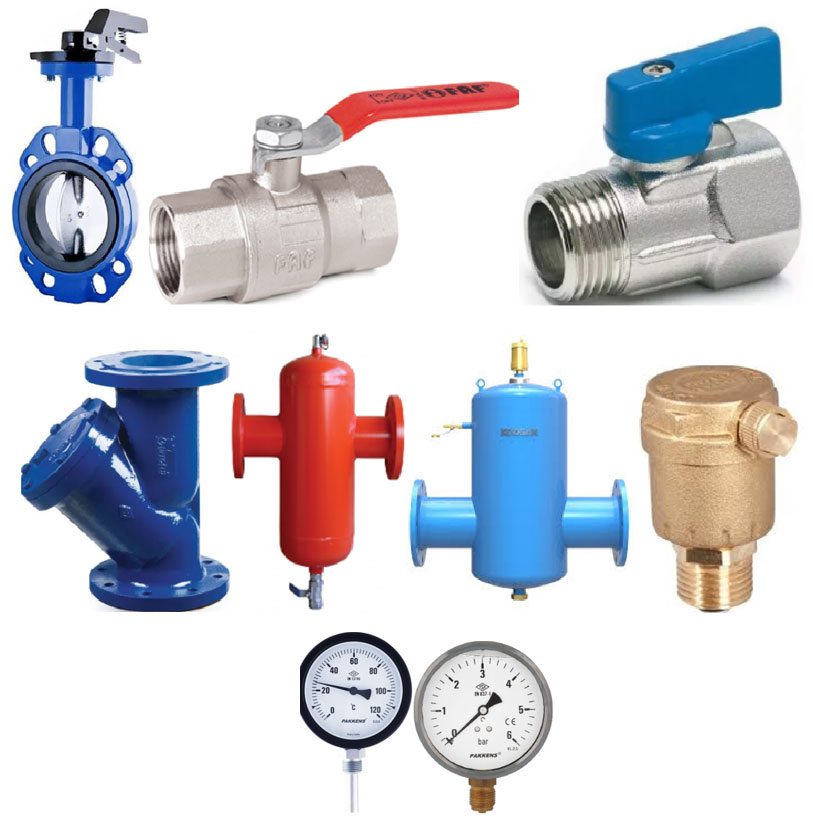
Greenhouse Heating System Flange-Bolts,Nuts and Washer.
They are devices that serve as Connection and Joining elements in the greenhouse heating system.
